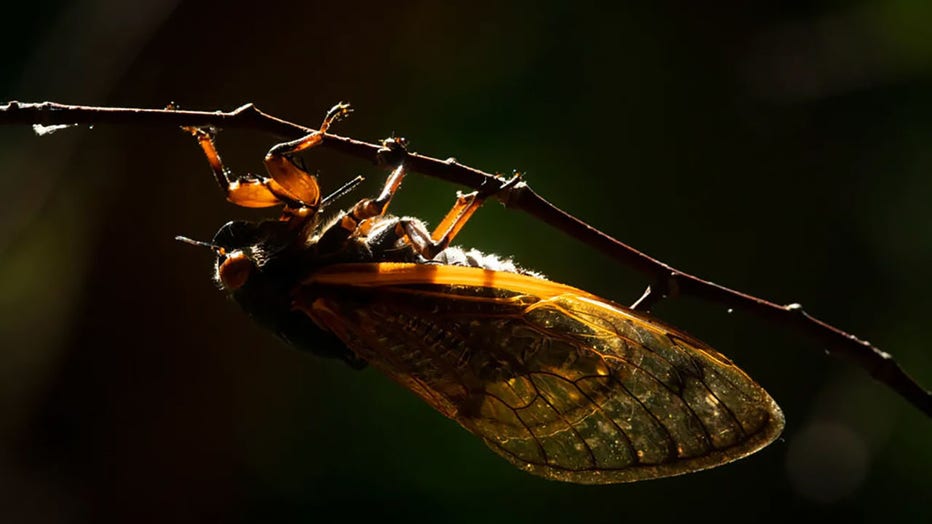Cicadas 2024: May arrives, bringing billions of noisy bugs with it
Cicadas appear in parts of US as 2 broods emerge
Videos of noisy cicadas have already begun to circulate on social media as the co-emergence of two broods is expected to bring an influx of the insects to parts of the southeast and Midwest United States this year. (Credit: Brad Buchanan via Storyful)
They’re here.
Yes, the cicada-geddon is upon us, and billions, if not trillions, of these very noisy critters will leave behind their eggs and be nothing more than a shell of themselves – get it?
The bugs typically start to emerge in mid-May when the soil gets warm enough, and stay through late June, according to Cicada Mania, a website dedicated to cicadas.
But some cicadas have made an earlier appearance this year.
So far, the red-eyed insects have been spotted (and heard) in parts of North Carolina, South Carolina and Illinois, and it’s only the beginning of this mass co-emergence.

FILE - A Brood X cicada on a tree in Kickapoo State Recreation area near Danville, Illinois, on June 10, 2021. (E. Jason Wambsgans/Chicago Tribune/Tribune News Service via Getty Images)
Some entomologists believe the early arrival is due to climate change, as the bugs don’t typically show up until the ground warms to 64 degrees.
The mass emergence will be the first time in 221 years that two types of cicadas have risen from the ground at the same time.
What are cicadas?
Cicadas are a family of insects called magicicadas, according to The Associated Press. They differ from other insects in that both the nymphs and adults have a beak they use to drink plant fluids. Adults have two sets of wings.
Cicadas are not locusts, and they are not grasshoppers. They are a different species. But when Europeans first arrived in America, some started calling them locusts and even grasshoppers.
There are more than 190 known varieties of cicadas in North America and 3,390 worldwide. Except for one species in India and one in Fiji, only the U.S. has the periodic cicadas that stay underground for most of their lives.
Cicadas don’t harm people or pets, though dogs have been known to binge and eat too many.
Scientists say you shouldn’t kill cicadas.
The only things cicadas can harm are young trees if they climb up them and try to plant eggs on weak young limbs. Experts say netting young trees protects them. Do not use pesticides.
2 broods
The mass emergence of cicadas will come in two broods: Brood XIX and Brood XIII.
Brood XIX emerges on a slightly shorter 13-year cycle, while Brood XIII appears on a 17-year cycle.
Brood XIX will begin to emerge first and will be followed by Brood XIII.
RELATED: Map: Here's where the double broods of cicadas will emerge in 2024
Where will cicadas emerge?
The two broods of cicadas will emerge across parts of the Southeast and Midwestern states.
The largest of the two broods – called Brood XIX – will appear in the Southwest, including Alabama, Arkansas, Georgia, Indiana, Illinois, Kentucky, Louisiana, Maryland, Missouri, Mississippi, North Carolina, Oklahoma, South Carolina, Tennessee and Virginia.
Brood XIII will be restricted mostly to northern Illinois, eastern Iowa, southern Wisconsin and a few counties in extreme northwestern Indiana.
How loud can cicadas get?
The answer is: very.
In some areas where there are a particularly large number of bugs, sound levels can reach upward of 90 to 120 decibels, according to the USDA Forest Service. These noise levels are comparable to a lawnmower or even a motorcycle.
But don’t worry, cicadas typically only "sing" during the day, and only males can make noises to attract a female for the mass mating frenzy.
The Associated Press and FOX Weather contributed to this report. This story was reported from Los Angeles.

